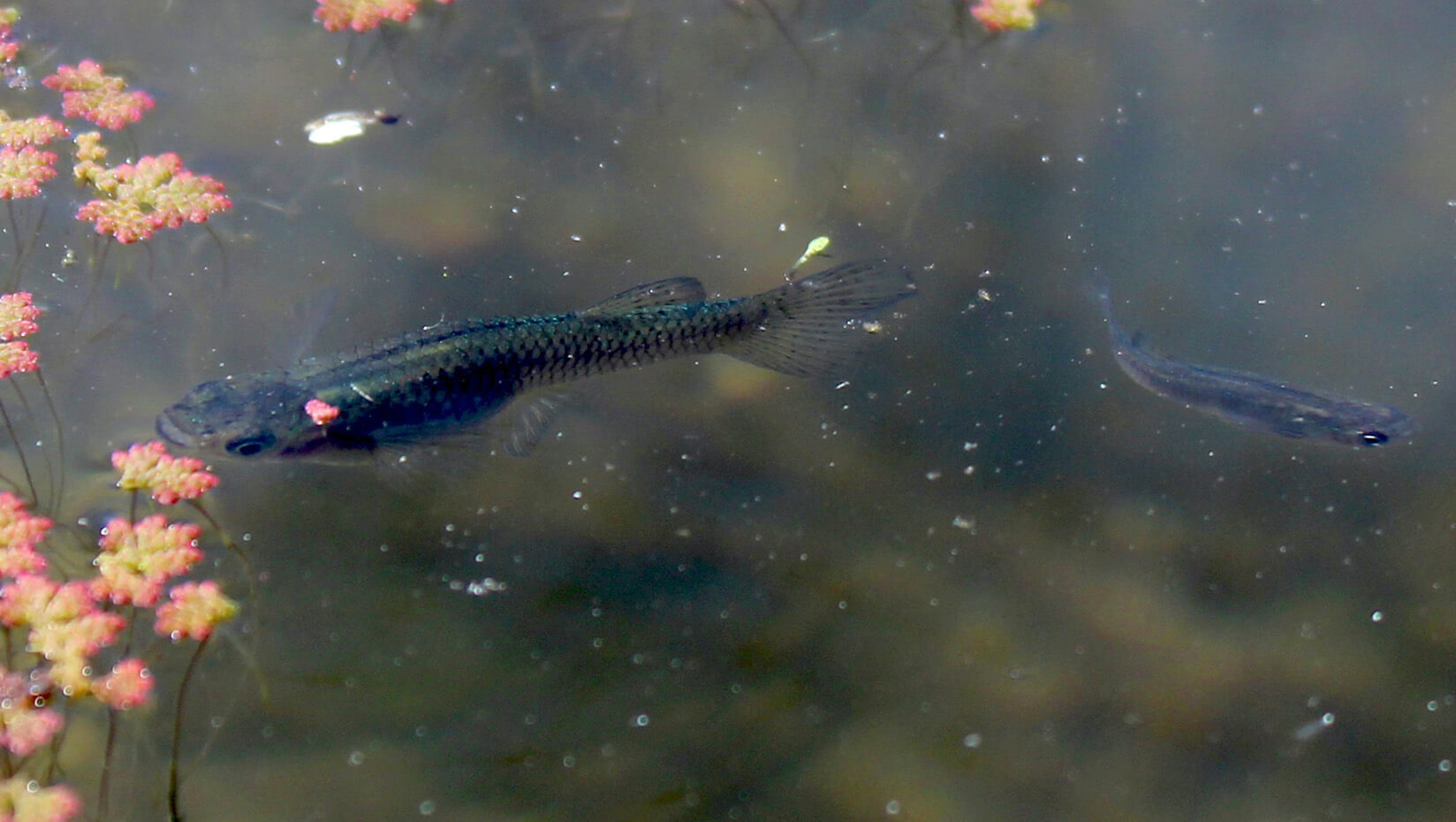
Female invaders are ecologically stronger than males
Males and females of many species are often visibly different from one another. Scientists call these differences ‘sexual dimorphism’ and it has been studied extensively by evolutionary biologists all of the way back to Charles Darwin.
But what is not yet clearly understood is how these differences impact an entire ecosystem.
Researchers at the University of Maine and University of California at Santa Cruz recently published a paper suggesting that sexual dimorphism and the ratio of females to males in populations of western mosquitofish can shape the ecological impacts the invasive fish has on an ecosystem.
The researchers found that female-dominated populations of mosquitofish have a greater ecological impact compared to males.
Western mosquitofish, originally from North America, have been widely introduced around the world to control mosquitos that spread diseases such as West Nile Virus and malaria.
But their wide introduction created unintended consequences for native biodiversity and changes in pond ecosystems, resulting in the species being listed among the world’s 100 worst invasive species by the International Union for Conservation of Nature.
“Mosquitofish are known to have detrimental effects on native freshwater fauna, and in a lot of places there are efforts to control and extirpate them,” Eric Palkovacs, assistant professor of ecology and evolutionary biology at the UC Santa Cruz, said. “It’s been called the ‘plague minnow’ in Australia and New Zealand because its effects are so drastic.”
In their experiments, the researchers varied the ratios of mosquitofish sexes introduced into experimental pond ecosystems and compared them to ponds without the invasive fish. The experimental pond ecosystems contained sediments, algae, zooplankton and other naturally colonizing invertebrates and amphibians.
“One of the interesting population patterns that we see in mosquitofish is just how different populations can be in their proportions of males and females,” Michael Kinnison, professor of evolutionary biology at the UMaine, said. “We have been frustrated on more than a few occasions by how challenging it can be to capture one sex when you already have buckets of the other.”
This variation in sex ratios is likely caused by differences in size, behavior, longevity and preferences of predators like birds and other fish, explains Kinnison.
The scientists found that female-dominated populations changed their pond communities more than male-dominated populations, resulting in stronger ‘trophic cascades’.
Trophic cascades are changes in communities that occur when predators, like mosquitofish, reduce the abundances of their prey, leading to increased abundances of those prey’s prey, producing a flip-flopping effects down the food chain.
“We knew from past work that mosquitofish introductions produce trophic cascades all of the way down to the algae at the base of the food chain,” said Kinnison. “What was surprising, is that female-biased populations significantly magnified essentially all of those cascading effects.”
The researchers found that populations with more females exacerbated cascade effects on everything from zooplankton and algae to temperatures and pH (a measure of water acidity).
The authors of the study indicated this pattern is consistent with some of the known differences between female and male mosquitofish. Female mosquitofish are larger and prefer larger prey, have higher feeding rates and spend more time foraging in the presence of other females when males instead devote more time to finding mates.
The findings from this study have both general and applied implications, says Kinnison.
Sexual dimorphism and sex ratio variation are very common in fishes and other taxa, so this work could provide encouragement to consider the ecological consequences of these patterns in many other species.
From an applied standpoint, says Kinnison, the approaches used to control mosquitofish and other invasive species — such as trapping or introductions of sterile males to reduce fertile matings — can inadvertently shift sex ratios and in doing so alleviate or intensify the ecological effects of such invaders.
Understanding the population biology and ecological effects of such invaders is imperative to predicting their impacts and managing them. Not all populations of invaders are equally harmful, so finding out what makes some worse than others is important.
The experiments for this study were conducted at UCSC’s Long Marine Laboratory with mosquitofish collected from a California mosquito vector control district.
The paper, titled “Sex ratio shapes the ecological effects of a globally introduced freshwater fish,” was published October 21 in Proceedings of the Royal Society B.
Other authors included Heather Arnett, graduate student at UMaine, and David Fryxell and Travis Apgar, graduate students at UC Santa Cruz. The research was funded by the National Science Foundation, UC Santa Cruz and the Maine Agricultural and Forest Experiment Station.
Contact: Amanda Clark, 207.581.3721; Michael Kinnison, 207.581.2575
